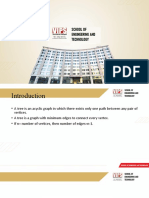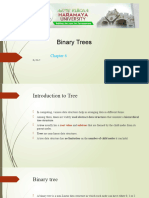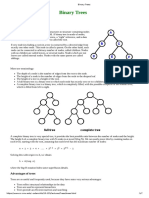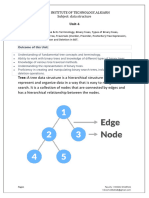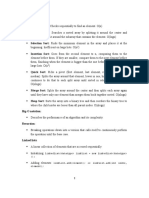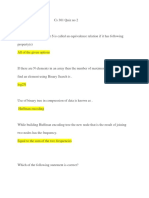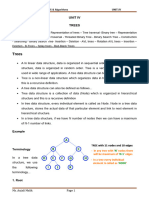0% found this document useful (0 votes)
19 views33 pagesTrees in DSA
The document provides an overview of trees in data structures, focusing on binary trees and binary search trees (BST), including their definitions, operations, and complexities. It discusses various types of trees, such as AVL trees and red-black trees, and their applications in computer science. Additionally, it covers the advantages and disadvantages of BSTs, as well as traversal methods and the importance of balancing in tree structures.
Uploaded by
a9896688617Copyright
© © All Rights Reserved
We take content rights seriously. If you suspect this is your content, claim it here.
Available Formats
Download as PDF, TXT or read online on Scribd
0% found this document useful (0 votes)
19 views33 pagesTrees in DSA
The document provides an overview of trees in data structures, focusing on binary trees and binary search trees (BST), including their definitions, operations, and complexities. It discusses various types of trees, such as AVL trees and red-black trees, and their applications in computer science. Additionally, it covers the advantages and disadvantages of BSTs, as well as traversal methods and the importance of balancing in tree structures.
Uploaded by
a9896688617Copyright
© © All Rights Reserved
We take content rights seriously. If you suspect this is your content, claim it here.
Available Formats
Download as PDF, TXT or read online on Scribd
/ 33











